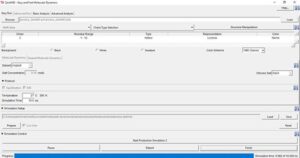Hello there! I am back, and this was my first week working with Dr. Igor Yorobyov, Dr. Slava Bekker, and Ph.D. student John Dawson at the University of California, Davis School of Medicine, in the Department of Physiology and Membrane Biology.
We began this week with our last meeting with Brandon Harris and Dr. Vladimir. We ended the last section of the internship by learning how we could interpret the data that GALigandock created and how to transfer the data to our computer. My data did not work due to an error that was created by my Windows computer. However, I was still able to work with the data of one of the other interns. This helped me realize how important ligand docking is when it comes to finding the right position for the experimental drug.
The same day we had our introduction to Molecular Dynamics. Molecular Dynamics uses the principles of Newtonian physics, and even though we can think that it is easy to explain these principles with Algebra, a high level of mathematics (which no high school student could possibly understand) is used to explain these naturally occurring phenomenons. During the simulations, the movement of the particles is due to the intermolecular forces between the molecules. In the case of our internship, it is between the ion channels and the plasma or solvent with which they are interacting. This is very important because the entire structure of the molecule could change. Dr. Slava Bekker introduced us to valinomycin, which is a proton carrier and is also used as an antibiotic. Depending on the solvent with which this molecule interacts, the molecule could turn inside out in the case of water due to the polar interactions.
Computers are in charge of predicting these movements using principles in high-level math and physics. We are using the computer program Visual Molecular Dynamics or VMD. John proceeded to give us a brief explanation of how to use the program. We ran the simulation for valinomycin, which took approximately a day to finish. Taking into consideration that valinomycin is a relatively small molecule and it took a very long time to finish, other ions whose channels are bigger require better computers, which is why Molecular Dynamics is a very expensive field.
Picture of VMD bellow.
It was a hard week full of learning. I was able to use my knowledge of chemistry to help me understand the way that the molecule was shifting its structure. It was awesome to hear the presentation from all of my mentors. It is very impressive the amount of information that we can connect from our previous classes, and the first half of the internship, but also to realize that as a high school students we do not even have 1% of the knowledge that our mentors have. I find this amazing and, it motivates me to keep learning.
At home, I have kept myself busy playing board games with my family. I also decided to revisit my Harry Potter books that I had not touched since middle school. I hope everyone is staying safe and healthy.


There are no comments published yet.